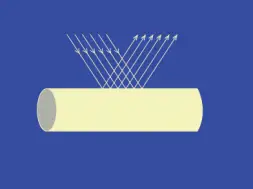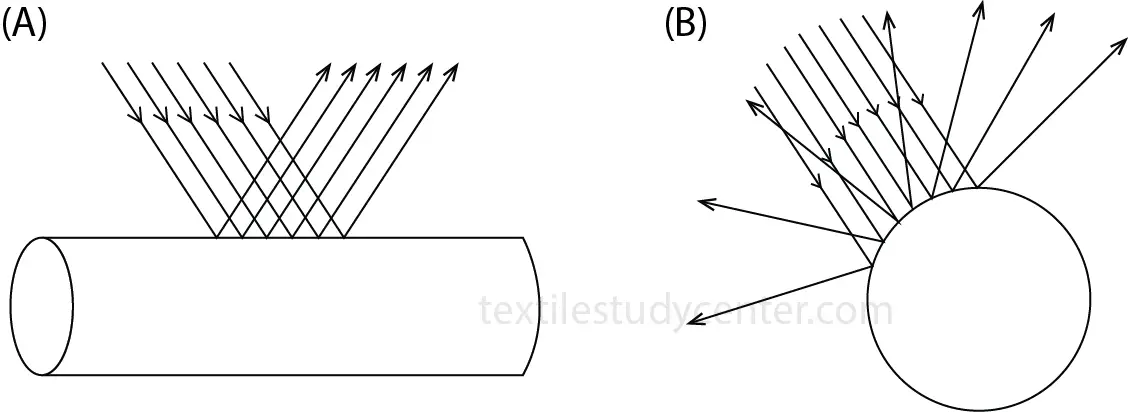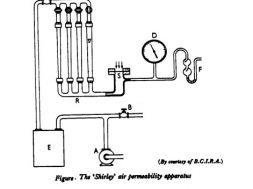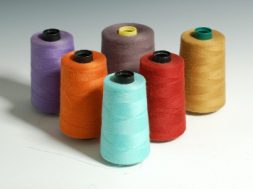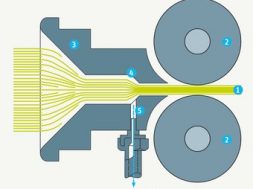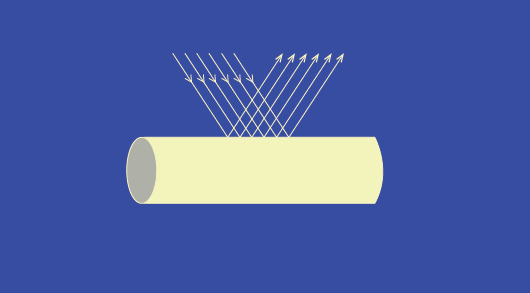
Reflection and Luster
Part 1: Optical Properties of Textile Fibers
Part 2: Birefringence | Fiber Birefringence
Reflection and Luster
Reflection
When light falls on the fiber, part of light is reflected. The amount of light reflected and how it is reflected are important optical properties of fiber. The amount of light reflected can be estimated by:
Where, R is the reflecting or fraction of light reflected and n the reflective index.
Types of reflection
There are three types of surface reflection
1.Specific reflection
2.Diffuse reflection
3.Combination of specular & diffuse reflection
Fig. shows three major types of surface reflection. Light may be reflected secularly, living the
surface with an angle qr=qi (Fig. A) or reflected diffusively, with equal intensity in all directions
(Fig. B). Most real surfaces show a combination of specular and diffuse reflections (Fig. C).
Luster
The luster of a single fiber is determined by the total visual appearance of these reflections from the fiber surface. It is directly proportional to the amount of light reflected by a fiber. Silk fibers has a high luster and cotton has low luster.
Factor affecting on luster:
Luster of the fabric is the most vital point. The attraction of the fabric depends on the luster of the fabric. Luster of fabric depends on various factors. They are followed……
❶ Incident angle of light
❷ Finer fiber
❸ Irregularity of the fiber surface
❹ Cross-section of fiber
❺ Presence of TiO2 or Cavities
Incident angle of light: If a fiber behaved as a perfectly reflecting circular cylinder, it would reflect light as shown in below figure. When the light incident upon the fiber along the longitudinal direction, it can be predominantly reflected at a constant angle. Whereas, when the light falls across fiber on the transverse direction, it is reflected at various angles.
Figure: Light is incident upon the fiber along: (A) the longitudinal direction
(B) the transverse direction
Finer fiber: Fiber fineness affects the luster the coarser fiber will have more luster than fiber one.
Irregularity of fiber surface: Irregularity on the surface of the fiber will cause light to be reflected and will reduce of fiber.
Cross-section of fiber: Many fibers do not have a smooth surface. Rougth surface and irregular cross-section shapes increase the diffuse reflection. Fibers with rougth or irregular cross section shape, such as wool & cotton, are not lustrous even when the light is incident along the fiber longitudinal direction. Fibers with smooth or regular cross-sectional shape, such as silk and some synthetic polymer fibers are lustrous.
Presence of TiO2 or cavities: When light falls on the surface of the fiber, a portion of the transmitted light can be reflected from the internal surface and join the light reflected from the outer surface. If the fiber contains small particles (e.g:TiO2) or cavities, these will scatter the transmitted light and cause apparent diffuse reflection.TiO2 is used as deluster in MMF to reduce it’s luster.
Deluster:
A delusterent is a substance that is added to the dope before spinning of manufactured fibers. Powered metallic salts like titanium dioxide (TiO2) and geranium dioxide (GeO2) are used for making deluster.
Absorption and dichroism:
When light falls on a fiber, it is transmitted reflected or absorbed. The colour of a fiber is determined by the selective absorption of light wavelengths. For example, a yellow fiber has a yellow colour because it absorbs all wavelengths in the visual spectrum except yellow and yellow light is reflected.
The absorption of light in a fiber obeys the Lambert’s law:
Where,
I=intensity of light after passing for a distance through a fiber
I0=intensity of the incident light
K=Absorption coefficient
Dichroism:
The variation in the absorption of radiation by a coloured fiber with the direction of polarization of the light is called dichroism.
Dichroic ratio or constant:
The absorption of light in a fiber obeys the lambert’s law
The ratio between absorption coefficient for light polarized parallel to the fiber axis and absorption coefficient for light polarized perpendicular to the fiber axis is called dichroic constant.
Requirements of dichroism:
There are three requirements of dichroism…..
⦿ Firstly, the dye molecule must be asymmetrical so that its absorption varies with the direction of the electric field exciting the characteristics of vibrations.
⦿ Secondly, the dye molecules must be absorbed on the fiber molecule in a particular direction so that all the dyes molecules make the make the same angle with the axis of the chain molecules.
⦿ Thirdly, the chain molecules must be preferentially oriented.
When the first two condition are satisfied, the magnitude of the dichroism may be used as a measure of the orientation of the molecules in the fiber.
Why cross-sectional of fiber absorbs radiation than parallel cross-sectional of a fiber?
When light passing through two dichroic fibers (cross & parallel), cross-sectional of a fiber absorb more radiation than parallel sectional of fiber. The reason is fairly obvious. If the fibers are crossed, the first fiber absorbs a large part of one component and second fiber absorbs a large part of the perpendicular component is transmitted through both little absorptions
(2705)
